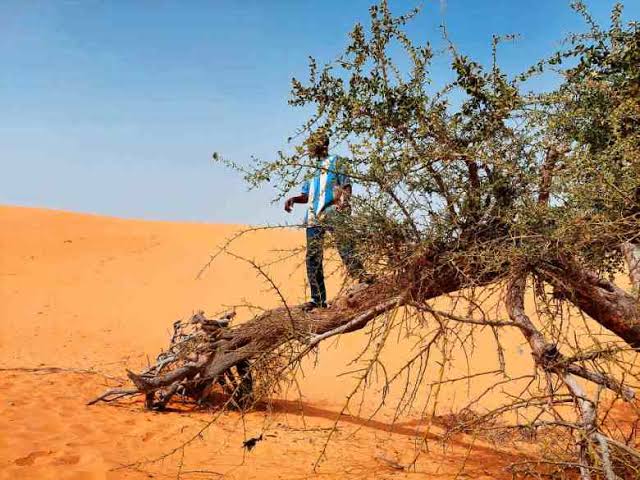SEO Riders:
– Jigawa desertification neglected
– High-impact land restoration needed
– Jigawa tree-planting scale-up critical
Despite its growing severity, desertification in Jigawa State remains significantly under-prioritized—jeopardizing agricultural livelihoods, rural economies, and ecosystem stability. While the land degradation creeping southwards from the Sahel threatens to engulf fertile terrain, media attention and policy urgency have not matched the magnitude of the crisis.
Currently, desertification undermines soil fertility, reduces water availability, and increases both poverty and conflict in affected communities. Without aggressive, integrated responses, these risks will escalate. Yet the overwhelming focus remains on short-term interventions, failing to embed widespread resilience across sectors and communities.
Why It Deserves More Attention:
1. Massive Scale, Inadequate Coverage: Jigawa has lost land at an alarming rate—millions of hectares state-wide—due to a deadly combination of drought, overgrazing, deforestation, and unsustainable land use, with harm quietly accelerating. Current restoration efforts are encouraging but remain insufficient in scale and reach.
2. Visibility Gap in Media and Policy: Though the issue threatens food security and economic stability, little comprehensive media coverage or sustained policymaker focus persists—limiting public awareness and weakening momentum for collaborative action.
3. Restoration Is Possible—but Scattered. Jigawa has launched notable afforestation and land restoration projects: 5.5 million trees planted statewide, with 20 km of drainage constructed and 72 km of erosion-reclaimed land completed. Jigawa is actively part of the Great Green Wall initiative, hosting seven seedling nurseries and planting over a million seedlings across 600 hectares. Yet, these interventions—though impactful—lack the nationwide visibility and scale needed to shift the desertification trajectory.
4. High-Impact, Scalable Solutions Exist The ACReSAL program, backed by the World Bank, offers a roadmap: restoring 1 million hectares through integrated measures combining reforestation, gully control, sustainable agriculture, and community engagement. With broader adoption, such models could amplify impact—accelerating land recovery and empowering communities.
